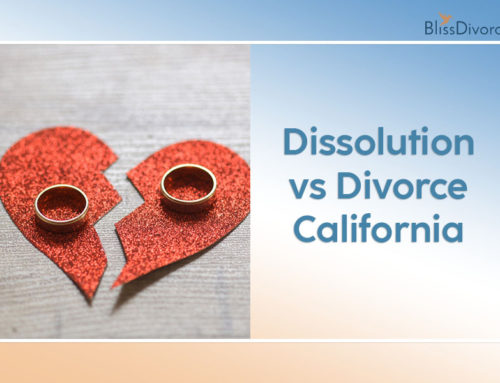The legal dissolution of marriage is a complex process that involves distinct roles for those initiating and responding. Two essential terms, petitioner vs respondent in divorce, are essential in navigating the legal landscape. Each holds a unique position, influencing the trajectory of the divorce proceedings.
While divorce can be emotionally and financially challenging, having a knowledge of the legal terms and aspects can help you navigate the process effectively. Understanding these roles and their differences is fundamental for grasping the dynamics of divorce and ensuring a fair and equitable solution for both spouses.
What Is the Difference Between a Petitioner and a Respondent in a Divorce?
The petitioner and respondent play a pivotal role in the intricate tapestry of the divorce. As these roles unfold, knowing the nuances and legal considerations that define each position is vital. Whether you find yourself initiating a divorce or responding to a legal call, guidance from legal professionals is essential.
While San Francisco divorce attorneys tend to charge higher fees, online platforms can help you navigate the process quickly and cost-effectively. With a clear understanding of your roles and obligations, you can go through a divorce with diligence and confidence. Let’s delve into details, starting with the petitioner.

Source: shutterstock.com / Photo Contributor: Julia Zavalishina
The role of the petitioner
At the outset of the divorce process, the petitioner takes the first step toward legal separation. This party makes the decision to dissolve the marriage and takes an active role in shaping the initial direction of the divorce case. The petitioner initiates the divorce proceedings by filing a petition with the court.
This document outlines the grounds for divorce, citing reasons like irreconcilable differences or specific legal grounds recognized by the jurisdiction. In California, all divorces are ‘no fault’, and the spouse initiating the divorce doesn’t have to prove the other spouse did something wrong.
Generally, if you are the petitioner, you can file due to ‘irreconcilable differences’, meaning you and your spouse don’t get along. As a petitioner, you set the narrative and initiate the framework within which the divorce will unfold. Filing with the court signals the commencement of the divorce process and sets the stage for the respondent’s subsequent actions.
The role of the respondent
The respondent reacts to the legal overture orchestrated by the petitioner. This party also has a crucial position, as they have a task to either accept or challenge the grounds for divorce the petitioner presents.
As a respondent, your response will set the direction of the subsequent legal proceedings. When the petitioner files the petition within the court, you, as a respondent, will receive the legal documents. You must carefully review the content and craft a response.
Your response means that you will participate in the divorce process. It must outline your position in the matters at hand. You can agree with the petitioner’s claims or present a counter argument. In California, you have 30 days from the day of service to file a response within the court.
During this time, you have an opportunity to address any concerns and propose alternative terms if you disagree with the other party. To respond to legal separation papers, you need to fill out a response form. While responding is not legally required, failing to do so comes with consequences.
If you don’t respond to the deadline, your spouse can ask for a default. In such a case, the court won’t let you file a response and can decide the court case without you. You can also choose not to respond if you and your spouse have a written agreement known as default with an agreement.
How Does One Become a Petitioner in Divorce?
Since divorce is a significant life event, knowing how to become a petitioner is crucial. Let’s take a closer look, focusing on the process in the state of California.
Initiating a divorce case in California
The journey of divorce begins with a decision to seek legal separation. In California, the process involves specific steps to ensure a structured and fair resolution. As a petitioner, you must prepare and file a divorce petition and summons, formally initiating the divorce process.
This document specifies the grounds for divorce and crucial matters like child custody, spousal support, and asset division. Therefore, before you start, we recommend getting familiar with all the legal terms.
You can get help from the court or hire a lawyer, but it is often considered a costly and time-consuming option. Additionally, you can get assistance by requesting divorce on an online divorce platform and getting support from licensed legal professionals who guide you throughout the divorce.
Understanding the importance of jurisdiction and venue in filing for divorce
When deciding where to file for a divorce, there are two essential considerations – jurisdiction and venue.
The former refers to the power granted to a specific court to hear a case and issue a ruling. Selecting the appropriate court is critical, as jurisdiction and venue play a key role in determining which court has the authority to handle your case. The venue is where the case will be heard and is often the county where either spouse resides.
California law states that at least one spouse must be a state resident for six months before the filing. Based on the residency requirements, the petitioner must have lived in the county they filed for at least three months. Filing in the correct jurisdiction and venue is essential to ensure the legality of the divorce proceedings.

Source: shutterstock.com / Photo Contributor: Andrey_Popov
What Are the Responsibilities of a Petitioner During a Divorce Process
As the initiator of the divorce process, the petitioner has significant responsibilities that go beyond the act of filing. Aside from expressing a desire for marriage dissolution, they are entrusted with adhering to legal obligations.
Such obligations ensure the legal proceedings’ transparency, fairness, and overall integrity. One of the petitioner’s primary responsibilities is preparing and submitting the divorce petition.
Providing accurate and complete information in the divorce petition
Accuracy and completeness are crucial in this document. As a petitioner, you must disclose critical matters like child custody, spouse support, and asset distribution. Failure to provide accurate information will not only impede the divorce process but also lead to repercussions in the final settlement.
Transparency is the cornerstone of the divorce process, and as a petitioner, you must adhere to timely disclosure requirements. This involves providing comprehensive financial information like income, assets, debts, and expenses.
Full disclosure of important information enables both parties and the court to make informed decisions. This includes alimony, property division, and financial matters. That said, delay or omission in providing relevant data can lead to complications that the court may view unfavorably.
Can a Respondent in a Divorce Counter-Petition?
As a respondent, you have the ability to counter-petition at the same time that you answer the petition and shape the divorce narrative. The party filing a counter-petition requests the court to hear their case and grant them a divorce.
This legal maneuver enables you to assert your own claims and concerns. Such a legal complaint gives you an opportunity to present your side of the story and take a stance on matters like child custody, support, and property division.
While the right to counter-petition empowers the respondents, it is vital to consider the process carefully. Seeking legal advice before filing is paramount. By seeking legal guidance, you can navigate the complexities of this process, strategically address their concerns, and work towards a fair and comprehensive resolution.
Can the Roles of Petitioner and Respondent Change During the Divorce Process?
In the fluid landscape of divorce proceedings, both the petitioner and the respondent play an active and equal role. However, the roles of both the petitioner vs respondent in divorce are not set in stone. Under specific circumstances, these roles may undergo changes that reflect the evolving dynamics of the divorce process.
Circumstances under which roles may change
In the case of an amicable divorce, spouses may find common ground and agree to modify their roles in the divorce proceedings. They can mutually agree to alter specific terms of the divorce petition or response.
Both parties have the option to amend their initial filings throughout the course of the divorce. If new information resurfaces or circumstances change, amending the petition or the response allows for an accurate representation of each party’s stance.
Addressing the legal process for modifying roles
The legal process regarding modifying roles during divorce proceedings involves formal steps to ensure adherence to legal requirements. They include:
1. Filing an amendment
Either party can file for an amendment to their initial petition or response. This involves submitting the document to the court and outlining the proposed changes. The court will then review them and ensure they comply with the legal standards.
2. Court approval
The court has a crucial role in approving the modifications of the roles of the petitioner and the respondent. The proposed changes must align with the law and serve both party’s best interests.
3. Legal counsel and mediation
Seeking legal guidance is recommended when considering modifications of the divorce roles. In some cases, mediation can facilitate constructive discussions between the spouses and help them reach mutually agreeable adjustments.
Legal Considerations for Both Petitioner and Respondent
In the realm of divorce proceedings, the petitioner vs respondent in divorce are bound by legal rights, obligations, and potential consequences. Understanding these aspects is vital for achieving a fair and lawful resolution.
Overview of legal rights and obligations for both parties
The petitioner has the right to initiate the divorce process and present the grounds for the dissolution of the marriage. They have an obligation to provide accurate and complete information in the petition for transparent legal proceedings.
As a petitioner, you need to be honest with your partner about your intentions related to various divorce matters. You must also stay organized and track all the necessary documents.
In contrast, the respondent holds the right to respond to the divorce petition. They can either agree or contest the presented grounds. Like the petitioner, the respondent is obligated to provide accurate and comprehensive information.
Importance of legal representation and seeking legal advice
Having proper legal representation empowers the petitioner to navigate complex legal procedures. This will ensure the petition is accurately prepared and filled. Conversely, legal guidance is crucial for the respondent to formulate a well-structured response and understand important divorce matters.
As we can see, both parties may benefit from proper legal representation during the divorce process. Legal professionals offer insights into each party’s roles and potential outcomes and can assist the spouses in making informed decisions.
Seeking legal advice contributes to a smoother legal process and mitigates the risk of adverse consequences. It ensures each party’s interests are adequately represented throughout the divorce proceedings.
Addressing potential consequences of not fulfilling legal responsibilities
Failing to fulfill legal responsibilities like providing accurate information may lead to delays and complications during divorce. Not adhering to the legal requirements may result in unfavorable outcomes regarding asset division, alimony, and child custody arrangements. Persistent disregard for legal responsibilities may also lead to contempt of court charges and potential fines and penalties.

Source: shutterstock.com / Photo Contributor: Freedomz
Conclusion
The roles of petitioner vs respondent in divorce stand as distinct pillars in the legal landscape. As we reflect on the key differences between these roles, it is evident that the petitioner initiates the divorce while the respondent shapes the response to the divorce petition.
A crucial reminder echoes through these legal intricacies – understanding the roles and responsibilities is key during divorce. The petitioner and respondent both hold rights and obligations, from providing accurate information to navigating the complexities of divorce.




